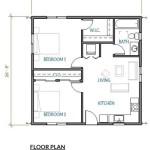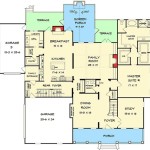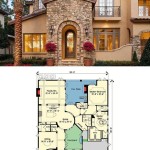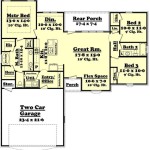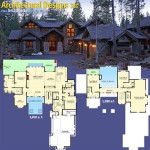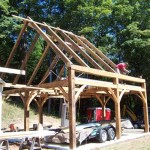How To Create Your Own House Plans
Embarking on the creation of house plans is a significant undertaking, whether for new construction, a substantial renovation, or simply to visualize a dream home. While engaging a professional architect or designer is often the most efficient route, developing your own house plans offers a level of control and personalization that may be highly desirable. This article provides a comprehensive guide to the process, outlining essential steps and considerations to help you develop accurate and functional house plans.
Understanding Building Codes and Regulations
Before beginning the design process, a thorough understanding of local building codes and regulations is paramount. These codes are in place to ensure the safety, health, and welfare of occupants and the general public. They dictate various aspects of construction, including structural integrity, fire safety, accessibility, and energy efficiency. Neglecting to adhere to these codes can result in costly revisions, delays, and even legal complications.
The first step is to identify the relevant governing authorities. This may include city, county, or state agencies. Obtain copies of the local building codes and zoning ordinances. Pay close attention to regulations concerning setbacks (the required distance between a building and property lines), height restrictions, lot coverage (the percentage of the lot that can be covered by structures), and specific requirements for different types of construction (e.g., residential, commercial). Zoning ordinances will also dictate permissible land uses and may influence design choices.
Familiarize yourself with the International Residential Code (IRC), which serves as a model code for many jurisdictions. While local codes may vary, the IRC provides a comprehensive framework for residential construction. Key areas to understand include structural requirements (foundations, framing, roofing), electrical systems, plumbing systems, mechanical systems (heating, ventilation, air conditioning), and fire safety measures (smoke detectors, fire-resistant materials). Consult with a local building official or qualified construction professional if clarification is needed.
Accessibility requirements, as defined by the Americans with Disabilities Act (ADA) and local accessibility codes, must also be considered. These requirements dictate design features that ensure accessibility for individuals with disabilities, such as accessible entrances, hallways, bathrooms, and kitchens. While not always strictly enforced in single-family homes, incorporating universal design principles promotes inclusivity and enhances the long-term value of the property. Energy efficiency codes are increasingly stringent and dictate insulation levels, window performance, and HVAC system efficiency. Compliance with these codes can significantly reduce energy consumption and utility costs.
Defining Needs and Wants: Space Planning and Functional Layout
The next phase involves defining the specific needs and wants of the occupants. This requires a detailed assessment of lifestyle, family composition, and long-term goals. Begin by creating a list of essential rooms and their required functions. Consider the size and configuration of each room, taking into account furniture placement, circulation patterns, and natural light.
Develop a program that outlines the desired square footage for each space. Think about the activities that will occur in each room and how they relate to other spaces. For example, the kitchen should ideally be located near the dining area and potentially the garage for ease of grocery unloading. Bedrooms should be grouped together and located away from noisy areas, such as the living room or kitchen. Home offices should be situated in a quiet area with ample natural light.
Consider the flow of the house. How will occupants move from one space to another? Circulation paths should be clear and unobstructed. Minimize long corridors and maximize the use of open floor plans where appropriate. Think about the relationship between indoor and outdoor spaces. Consider incorporating features such as patios, decks, or sunrooms to extend living areas and enhance the connection with nature. Prioritize natural light and ventilation. Orient the house to maximize solar gain in the winter and minimize heat gain in the summer. Position windows to capture prevailing breezes and provide cross-ventilation. Carefully consider views from windows and ensure privacy from neighboring properties.
Consider future needs. Will the house need to accommodate aging in place? Plan for wider doorways, grab bars, and other accessibility features. Will the family grow? Consider designing spaces that can be easily adapted or expanded as needed. Think about storage needs. Adequate storage is essential for maintaining a clutter-free and organized home. Incorporate ample closet space, built-in shelving, and storage areas in the attic or basement.
Translating Ideas into Drawings: Floor Plans, Elevations, and Sections
Once the space planning is complete, the next step is to translate those ideas into detailed drawings. This involves creating floor plans, elevations, and sections, which are the primary components of a set of house plans. Software programs, both professional (such as AutoCAD and Revit) and consumer-oriented (such as SketchUp and Home Designer Suite), can greatly assist in this process. However, basic drawing skills and an understanding of architectural conventions are still essential.
The floor plan is a bird's-eye view of the house, showing the layout of rooms, walls, doors, windows, and other features. Draw the exterior walls first, ensuring that they are accurately dimensioned. Then, draw the interior walls, doors, and windows. Adhere to standard architectural symbols and conventions. Indicate the location of all appliances, fixtures, and other fixed elements. Dimension all rooms and hallways, indicating their width, length, and overall square footage. Clearly label each room with its intended function. Include a compass rose indicating north, which is crucial for proper orientation of the house on the site.
Elevations are orthographic projections of the exterior of the house, showing the front, rear, and sides of the building. Elevations depict the appearance of the house from different angles, including the roofline, siding, windows, doors, and other architectural details. Ensure that the elevations are consistent with the floor plan and accurately represent the dimensions and proportions of the house. Note the materials and finishes to be used on the exterior of the house. Label each elevation with its corresponding direction (e.g., front elevation, rear elevation). Ground level needs to be clearly indicated.
Sections are vertical cuts through the house, showing the interior construction and the relationship between different levels. Sections are essential for understanding the structural components of the house, such as the foundation, walls, floors, and roof. They also show the location of stairs, plumbing, and electrical systems. Multiple sections may be required to fully illustrate the construction details of the house. Indicate the dimensions of all structural members and the materials to be used. These drawings need to show the vertical relationships between floors.
In addition to floor plans, elevations, and sections, other drawings may be required, depending on the complexity of the project. These may include site plans (showing the location of the house on the property), foundation plans (showing the layout of the foundation), framing plans (showing the layout of the structural framing), electrical plans (showing the location of electrical outlets, switches, and fixtures), and plumbing plans (showing the location of plumbing pipes and fixtures). All drawings should be drawn to scale and clearly labeled. Use consistent line weights and text styles to ensure readability and clarity. Always review and revise the drawings carefully to ensure accuracy and completeness.
While creating your own house plans can be a rewarding experience, it requires a significant investment of time and effort. If you lack the necessary skills or experience, it is generally advisable to seek the assistance of a qualified architect or designer. A professional can provide valuable guidance and ensure that your house plans meet all applicable codes and regulations.

Floor Plan Creator And Designer Free Easy App

House Plans How To Design Your Home Plan

House Plans How To Design Your Home Plan

House Plans How To Design Your Home Plan

Create Floor Plan Architecture Sink

House Plans How To Design Your Home Plan

House Plans How To Design Your Home Plan

House Plans How To Design Your Home Plan

Floor Plan Creator And Designer Free Easy App

House Plans How To Design Your Home Plan

